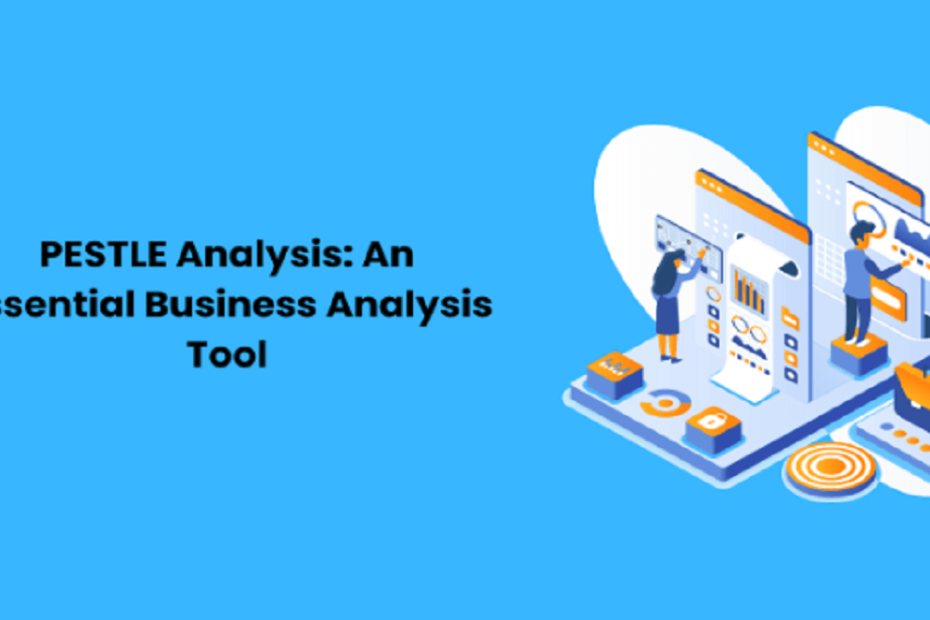Making educated judgements is critical for success and progress in the ever-changing business world. Business analysis is critical in assisting organisations in gaining useful insights into their internal and external surroundings, which allows them to make strategic choices. Business Analysis Training provides professionals with the skills and information to conduct extensive studies and use various business analysis technologies successfully. PESTLE analysis is one such crucial tool that provides a methodical way to evaluate the external influences that might affect an organisation’s operations. In this blog, we’ll look at the importance of business analysis training and deconstruct Business Analysis Tools for understanding the business landscape.
Table of contents
- The Importance of Business Analysis Training
- Understanding PESTLE Analysis
- The Significance of PESTLE Analysis as a Business Analysis Tool
- Conclusion
The Importance of Business Analysis Training
Think about the importance of business analysis training before diving into the technicalities of PESTLE analysis. People who get business analysis training are more equipped to evaluate business needs, spot possibilities, and provide solutions utilising a range of techniques, processes, and technology. It enhances their ability to gather and analyse data, permits improved communication, and provides helpful insights to aid in strategic decision-making.
Understanding PESTLE Analysis
PESTLE analysis is a widely used technique that aids firms in finding and analysing the outside factors that might affect their operating environment. Political, Economic, Social, Technological, Legal, and Environmental issues are referred to as PESTLE. Let’s examine each PESTLE analysis component in more detail:
- This section looks into how the organisation affects laws, rules, and political stability. Government stability, trade restrictions, and tax regulations are some factors that can significantly affect the economic climate.
- The overall economic conditions, including inflation, currency exchange rates, economic growth, and unemployment rates, are considered when making economic decisions. The purchasing patterns of consumers, the demand for goods and services, and corporate spending may all be directly impacted by these factors.
- Cultural, demographic, and sociological trends are examples of social variables that might have an effect on how an organisation operates. Understanding social concerns enables businesses to tailor their goods and services to meet the preferences and requirements of their clients.
- Technology concerns assess how technology advances may affect the organisation. This includes technological advancements, automation, and digitalisation, which have the ability to both challenge and create new possibilities for business models.
- Legal concerns are the laws, ordinances, and other obligations that businesses must abide by. These traits vary by industry and can affect the goals and operations of an organisation.
- The organisation’s approach to ecological and environmental problems is one of the environmental factors. This includes environmentally conscious corporate practices, climate change, and other environmental concerns.
The Significance of PESTLE Analysis as a Business Analysis Tool
As a business analysis tool, PESTLE analysis has many major advantages:
- PESTLE analysis is an orderly and thorough method of examining the potential external impacts on a company. It helps businesses to assess risks and opportunities from a variety of angles.
- Organisations are better equipped to manage risks and adhere to legal requirements when they thoroughly understand their political, economic, and legal background.
- By studying a variety of external factors, organisations may make informed and strategic decisions that fit the business environment.
- PESTLE research helps businesses find potential opportunities to seize and risks to mitigate, enabling proactive planning and response.
- PESTLE research enables firms to stay one step ahead of the competition by foreseeing developments and taking proactive measures.
- To stay competitive, businesses may adapt their products and services by staying up to date with social and technological advancements.
Conclusion
PESTLE analysis is a useful business analysis method that aids organisations in understanding their external environment and aids in making choices. Business analysis training includes PESTLE analysis, which teaches professionals how to evaluate the political, economic, social, technical, legal, and environmental issues that might affect an organisation’s operations. PESTLE research helps companies keep ahead of the competition, manage risks, and adapt to changing markets, leading to better overall performance.
